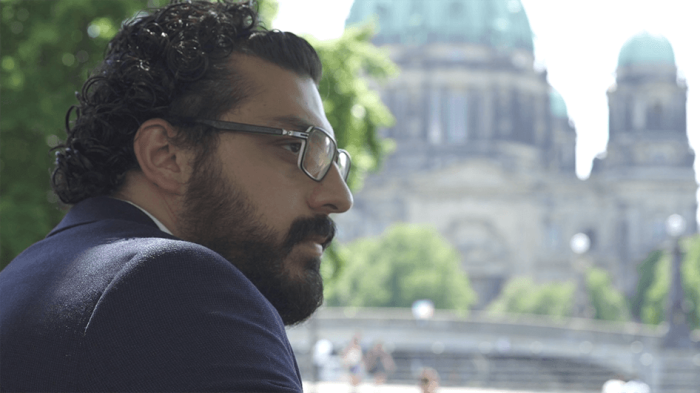The fight against the Islamic State (also known as ISIS) emerged as the top priority for Syria’s multiple warring parties in 2017. The government, with the assistance of Russia, Iran and Hezbollah, retook large parts of Central and Eastern Syria from ISIS while US-backed Syria Democratic Forces controlled Raqqa. The race to secure territory and consolidate gains was accompanied by grave violations of human rights and humanitarian law that have come to characterize the Syria conflict.
More than 400,000 have died because of the Syrian conflict since 2011, according to the World Bank, with 5 million seeking refuge abroad and over 6 million displaced internally, according to UN agencies. By June 2017, the UN also estimated that 540,000 people were still living in besieged areas.
The Syrian government has launched numerous chemical weapons attacks on civilians in opposition-held areas. With Russia and Iran’s support, the Syrian government has conducted deliberate and indiscriminate attacks against civilians and civilian infrastructure, withheld humanitarian aid, employed starvation as war tactic, and forcibly displaced Syrians in contravention of international law. The Syrian government’s practices of torture and ill-treatment in detention and enforced disappearances continue.
Non-state armed groups have also committed a host of violations. The groups have launched deliberate and indiscriminate attacks against civilians, abducted, and arbitrarily detained activists, used excessive force to stifle protests and interfered with humanitarian aid delivery. ISIS has reportedly used civilians as human shields, and employed landmines and other IEDs causing significant harm to civilians and civilian infrastructure.
Civilian casualties from airstrikes by the US-led coalition fighting ISIS increased with a local group, the Syrian Network for Human Rights, reporting 2,286 civilian deaths since the beginning of the campaign until September 2017. A number of these strikes raise concerns that the coalition failed to take necessary precautions to avoid and minimize civilian casualties.
While accountability efforts remained blocked at the Security Council, the UN General Assembly established in December 2016 a mechanism to assist in the investigation of serious crimes, preserve evidence and prepare cases for future criminal proceedings.
Targeting Civilians, Indiscriminate Attacks, Continued Use of Cluster Munitions and Incendiary Weapons
Unlawful attacks against civilians and civilian structures in Syria have persisted, with attacks on medical facilities, schools, and mosques.
The Syrian government regained control over opposition-held parts of Aleppo at the end of 2016. In their operation, the Russian-Syrian military coalition conducted indiscriminate air attacks, including strikes on several medical facilities, and used incendiary weapons and cluster munitions. The Violations Documentation Center (VDC), a local monitoring group, documented the killing of 446 civilians, including 91 children, in aerial attacks in eastern Aleppo between September 19 and October 18.
While the number of civilian deaths in Southern Syria decreased following local ceasefire agreements, unlawful attacks persisted. In June, for example, Russian-Syrian airstrikes and artillery attacks targeted the town of Tafas, south of Daraa, killing 10 civilians in and near a school.
In September, the Russian-Syrian Joint Military Operation launched an offensive on Idlib province. Airstrikes targeted several towns and surrounding areas in the province, destroying at least six hospitals and five civil defense centers, resulting in the death of over 150 civilians, according to the Syrian Civil Defense.
Cluster munition attacks by Syrian government forces on opposition-held areas continued unabated. At least 238 separate attacks using cluster munitions in Syria between August 2016 and July 2017 were reported by local activists, first responders, and medical personnel.
Human Rights Watch recorded at least 22 air attacks with incendiary weapons in 2017. In April 2017, Human Rights Watch documented the use of ZAB incendiary submunitions, containing thermite, and delivered by RBK-500 bombs used to attack the city of Saraqeb, northwest of Saraqeb.
Unlawful Restrictions on Humanitarian Aid, Sieges, and Forced Displacements
The siege of civilian areas and restrictions on humanitarian aid by government and pro-government forces and by armed opposition groups continued in 2017. UN OCHA estimate that around 540,000 persons were trapped in besieged areas as of June 2017 with the majority besieged by government forces in Eastern Ghouta.
Humanitarian conditions in besieged opposition enclaves rapidly deteriorated in 2017, forcing communities in several besieged areas to surrender to the terms of brokered ceasefire and evacuation deals with the government.
Several local “reconciliation” agreements were finalized in 2017, including the “Four Towns Agreement” signed in March, resulted in the evacuation of the government-besieged towns of Madaya and Zabadani in exchange for evacuating the towns of Fouah and Kefraya, encircled by armed opposition groups. The UN Commission of Inquiry and Amnesty International have found that some of these evacuations are unlawful and constitute forced displacement.
Unlawful Use of Chemical Weapons and Nerve Agents
The Syrian government’s forces continued to use chemical weapons repeatedly, with nerve agents being deployed on at least four occasions since late 2016—in eastern Hama on December 11 and 12, 2016, northern Hama, on March 30, and Khan Sheikhoun on April 4.
Clinical symptoms affecting victims of the chemical weapons attack in Khan Sheikhoun suggested that an organophosphorus compound, which targets the nervous system, was used. The attack killed at least 92, including 30 children, and injured hundreds more.
In September, the UN-appointed commission of inquiry’s report concluded that “the Syrian air force used sarin in Khan Sheikhoun, Idlib, killing dozens, the majority of whom were women and children.” The commission says it has evidence the attack was conducted by a Sukhoi SU-22 aircraft, a type that only Syrian government forces use. In October, the Joint Investigative Mechanism (JIM) of the UN and Organization for the Prohibition of Chemical Weapons (OPCW) found that the Syrian government was responsible for the chemical weapons attack in Khan Sheikhoun. Russia vetoed the renewal of the JIM whose mandate ended in November.
Human Rights Watch also documented government helicopters dropping chlorine on at least eight occasions in the offensive to recapture Aleppo, indicating widespread and systematic use of chemical weapons.
US-Led Coalition Airstrikes
In March, a U.S. warplane struck a mosque in al-Jinah village in Aleppo killing at least 38 people. The US said it struck a meeting of al-Qaeda members but local residents said that the victims were all civilians attending evening prayers. Statements by US military after the attack indicate they failed to understand the targeted building was a mosque, that prayer was about to begin, and that a religious lecture was taking place at the time of the attack. The United States did conduct an investigation into the airstrike, and found it legal, though it failed to clarify the factors that led to that determination or consult external actors. The UN Commission of Inquiry found the strike was unlawful as US forces failed to take all feasible precautions to minimize loss of civilian life.
According to the Syrian Observatory for Human Rights, a Britain-based monitoring group, around 1,100 civilians died in airstrikes launched by coalition planes since the campaign to retake the city of Raqqa began.
Human Rights Watch investigated several airstrikes in towns near Raqqa, including one on a school housing displaced persons in Mansourah on March 20 and a market and a bakery in Tabqa on March 22 that killed at least 84 civilians, including 30 children. According to local residents, the Mansourah school had long hosted displaced civilians fleeing other parts of Syria, and civilians had used the Tabqa market throughout the war.
These strikes raise concerns that US-led coalition forces did not take adequate precautions to minimize civilian casualties.
Enforced Disappearances, Death in Custody, Arbitrary Arrests, Torture
Arbitrary detention, ill-treatment, torture and enforced disappearances continued to run rampant in Syria. In 2017, the Syrian Network for Human Rights (SNHR) documented more than 4,252 individual arbitrary arrests, most of them conducted by government forces. As of August 2017, over 80,000 individuals remain disappeared according to SNHR.
In August, the wife of Bassel Khartabil, a computer engineer and freedom of expression advocate who was arrested in 2012, revealed that she had received confirmation that government forces had executed her husband in detention in 2015 but had kept his fate secret. The Syrian government also conducted arbitrary arrests under a law that criminalizes “unnatural sexual intercourse.”
Non-State Armed Groups’ Abuses
Hay’et Tahrir al-Sham
In January, a coalition of Jabhat Fateh al-Sham, which changed its name from Jabhat al-Nusra after stating that it was breaking off ties with al-Qaeda, and other opposition factions formed Hay’et Tahrir Al-Sham (HTS), which became the dominant group in Idlib province. During 2017 HTS committed a host of violations including arbitrary detention of civilians and local activists in Idlib. In response to protests by civilians in Idlib province contesting HTS’s control, the group reportedly shot at protestors, killing and injuring civilians. HTS also interfered with humanitarian aid delivery, in contravention of international humanitarian law.
HTS also targeted religious minorities through car bombings. In March, HTS claimed responsibility for two explosions in the Bab al-Saghir cemetery, a well-known Shia pilgrimage site south of Damascus which, according to the UN Commission of Inquiry, killed 44 civilians, including 8 children, and injured another 120.
ISIS
Abuses by ISIS against civilians continue unabated despite the group losing control of wide areas. ISIS used civilians as human shields in its defense of Raqqa and other towns, and employed internationally banned landmines to hold off the advance of attacking forces.
In May, ISIS militants attacked the town of Aqarib al-Safiyah, predominantly populated by Ismailis, a minority Shia Muslim community. While attempting to flee, residents were killed in the streets by snipers positioned at the village’s water reservoir and on the roofs of houses. In total, 52 civilians were killed, including 12 children according to the UN Commission of Inquiry. Another 100 were injured, including two girls who suffered serious head wounds.
The UN-OPCW’s joint investigation into the use of chemical weapons in Syria has previously confirmed that ISIS has used chemical weapons, specifically sulfur mustard gas, against civilians.
Other Armed Groups
Fighting among different non-state armed groups increased risk to civilians. The UN Commission of Inquiry has documented the death of an 11 year old child in Daraa City, as well as destruction of civilian infrastructure, as a result of indiscriminate shelling by armed groups. The commission estimated that practices of torture and arbitrary detention continued in areas under the control of armed groups, including Eastern Ghouta.
Areas Under Kurdish Democratic Union Party (PYD) Control
The security forces in PYD-controlled areas conducted a series of raids to close opposing political parties’ offices, and detained and harassed members of the political opposition and activists. Most were detained without any charges brought against them. The majority of prisoners were released after a few months.
Human Rights Watch has received reports of torture and ill-treatment in detention facilities controlled by the Syrian Democratic Forces (SDF) – a coalition of forces fighting ISIS primarily made up of the YPG. SDF held individuals without charge in violation of fair trial guarantees, according to local residents. Local activists report the SDF restricted the freedom of movement of displaced persons from Raqqa and Deir-Ezzor province who end up in displacement camps in SDF-controlled areas and deteriorating humanitarian conditions for the displaced.
Displacement Crisis and Forcible Evacuations
Neighboring countries, including Lebanon, Jordan, and Turkey, sought to curb the massive inflow of refugees with unlawful administrative, legal, and even physical barriers. Incidents of Turkish border guards shooting at Syrians and smugglers attempting to cross the border continue to be reported, including the fatal shooting of a three-year-old child in September. Lebanon maintained visa-like restrictions for Syrians seeking entry and stringent residency renewal regulations, negatively impacting refugees’ freedom of movement, access to education, and access to healthcare. Deteriorating conditions for Syrians in the Lebanese border town of Arsal led to almost 10,000 Syrians returning to Idlib largely under agreements negotiated between Hezbollah and different Syrian groups as well as ISIS.
In the first five months of 2017, Jordanian authorities deported about 400 registered Syrian refugees per month to unsafe conditions in Syria. Another estimated 500 refugees each month returned to Syria from Jordan under circumstances that are unclear. Authorities produced little evidence of wrongdoing by these refugees and did not give any real opportunity for the refugees to contest their removal or to seek legal help prior to their deportation.
Key International Actors
Peace talks held by the United Nations in Geneva have failed to achieve momentum. In January 2017, Russia, Iran and Turkey met in Astana, Kazakhstan along with representatives of the parties to the conflict to pursue a de-escalation of the conflict. While consecutive Astana meetings have resulted in a decrease in violence following a May agreement on four de-escalation zones, they have failed to realize a stop to the violence completely. The Syrian government, Russia and other actors repeatedly violated these ceasefires. In October, Turkey deployed troops inside Idlib province.
The Syrian government continued to violate Security Council resolutions demanding safe and unhindered humanitarian access; cessation of “indiscriminate employment of weapons in populated areas, including shelling and aerial bombardment, such as the use of barrel bombs;” and an end to the practices of arbitrary detention, disappearance, and abductions, and the release of everyone who has been arbitrarily detained.
In addition to persistently discouraging or pre-emptively rejecting suggestions for meaningful Security Council action to curb violations by the Syrian government, Russia, along with the Iranian government, continued to provide the Syrian government with military assistance in 2017.
The United States also continued to lead a coalition of other states targeting ISIS in Iraq and Syria, as well as to support the Syrian Democratic Forces in the same offensive. In April, the United States also launched an attack on a Syrian airfield in response to the Syrian government’s use of chemical weapons. In July, the United States, Jordan and Russia agreed to a ceasefire zone in southern Syria.
In December 2016, the UN General Assembly passed a resolution creating the “International, Impartial and Independent Mechanism” to gather, preserve, and analyze potential evidence of serious crimes in Syria for use in courts that may have a mandate over the abuses now or in the future.
In April, foreign ministers of EU member states adopted the EU strategy for Syria, which includes political and humanitarian actions and provides for efforts to promote accountability for war crimes and serious human rights violations. In May, the European Parliament welcomed the adoption of the strategy and stressed the need for accountability, both at the international and domestic levels.
In April, the EU hosted the “Brussels Conference on Supporting the Future of Syria and the Region,” in which donors pledged €5.6 billion for 2017 and €3.5 billion for the 2018-2020 period. In June, the European Commission announced €1.5 million to support the IIIM. In September, the EU announced the intention to host a second donors conference in Brussels in spring 2018.
Police and prosecutors in several countries, including Sweden, Germany, and France, are also in the process of investigating some individuals alleged to have committed serious crimes such as torture, war crimes and crimes against humanity in Syria under the principle of universal jurisdiction.









